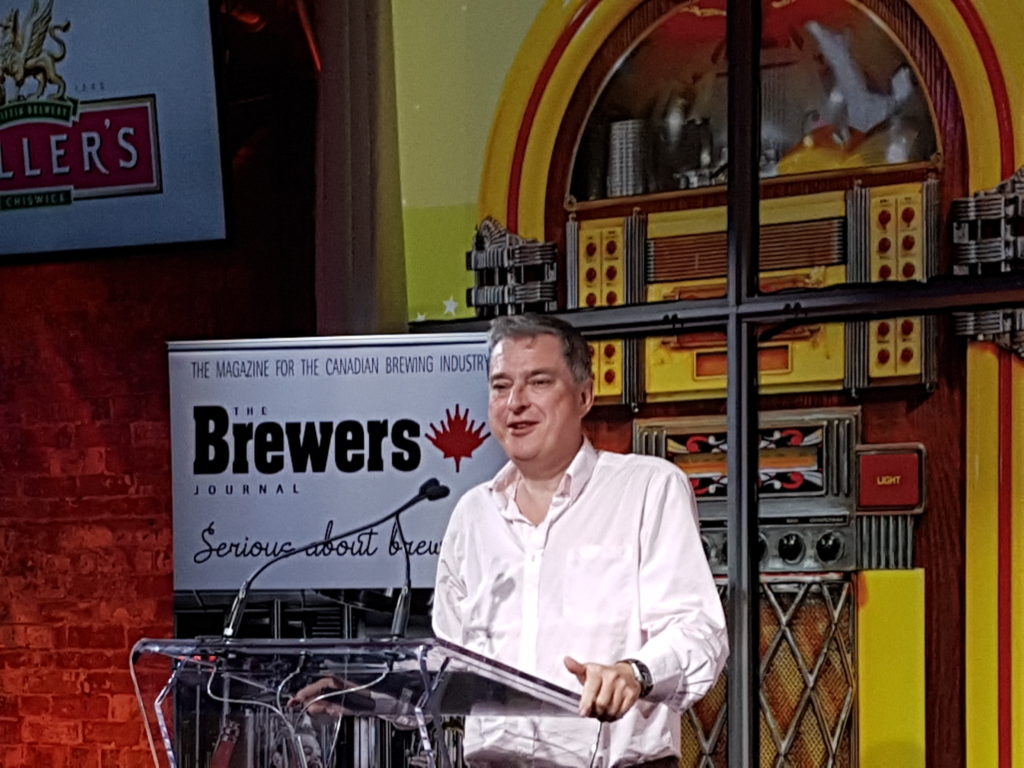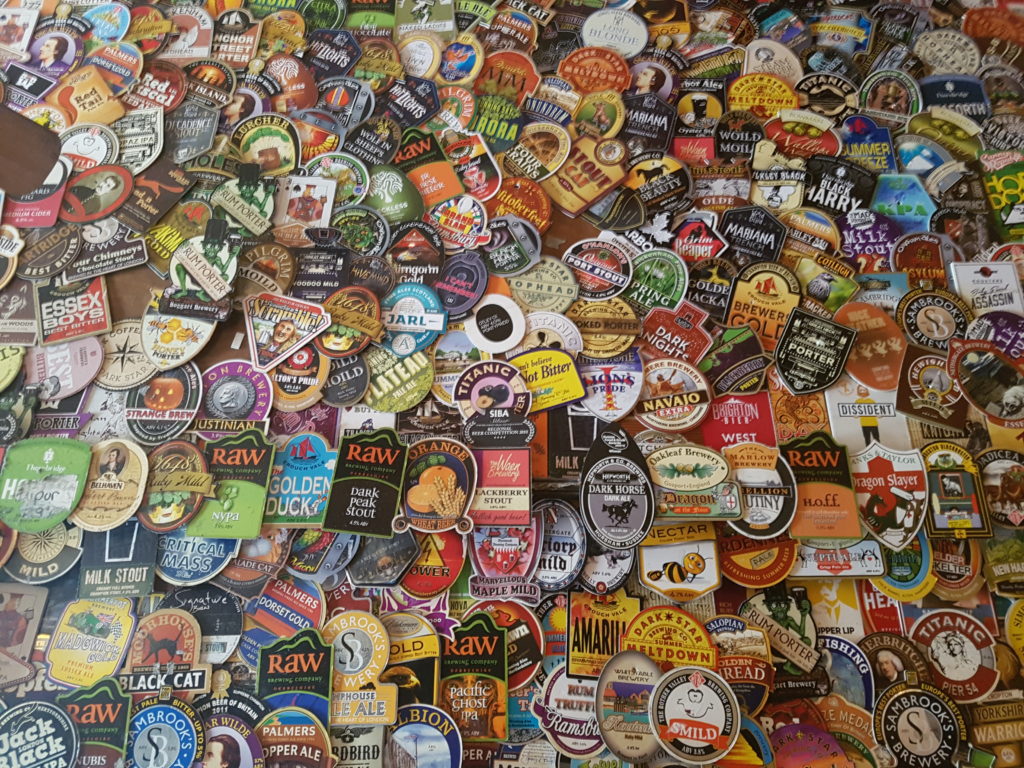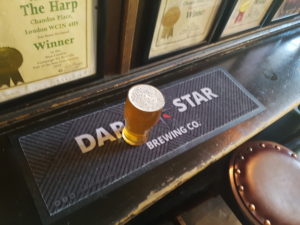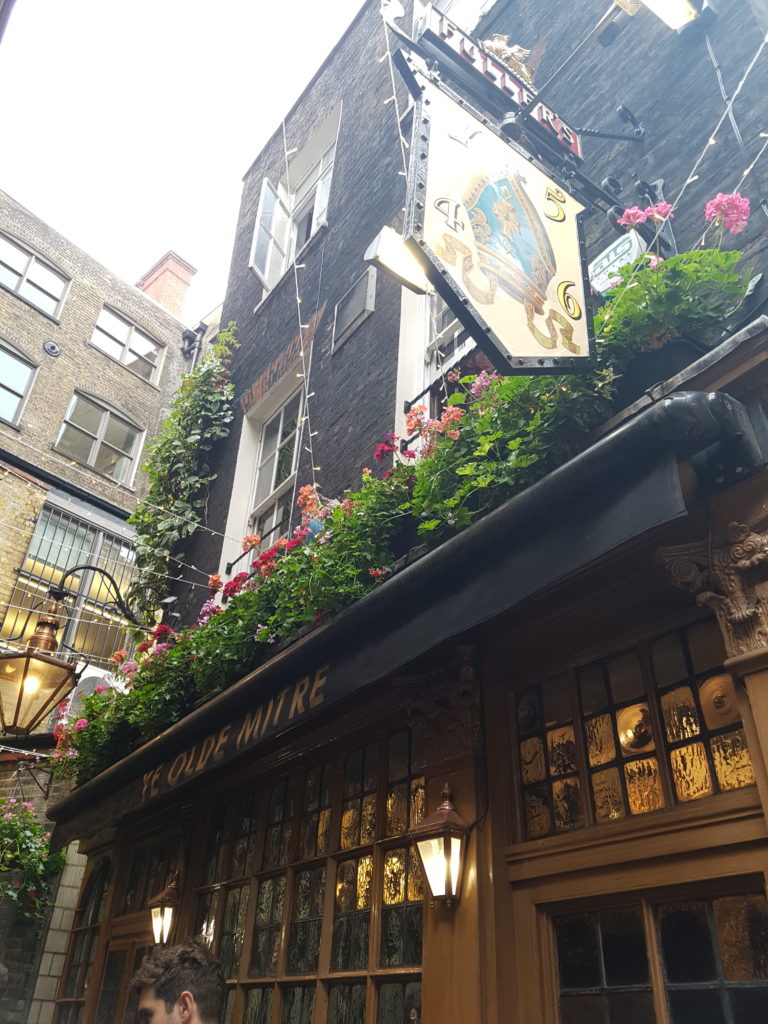He gets it wrong, but maybe I’ve explained what I’m looking for badly.
“Culture comes from the top down,” says John Keeling standing behind a row of bleachers during intermission. “Say I get a bonus annually and the director of the company comes to me and says that next year, I’ll get the same bonus, but only if I hit targets. If I have to hit a certain specification I might use additives to do it, but I’ll get that bonus.” Fuller’s doesn’t operate that way.
You don’t hear head brewers talk about compensation as analogy (for the most part they try not to mention money at all in my experience), but even at 62 and two weeks from retirement John Keeling is a bit of a scamp. His twitter account reinforces that impression constantly. He’s Manchester born and I’m pleased to note that throughout the talk he’s just given he’s never offered any information that’s fanciful or ill-considered. It’s down to earth, practical advice for anyone who might care to listen. He’s gotten laughs from an audience of still fairly sober brewers, and that’s a feat in and of itself. Brewers are a one and a half pint sort of audience.
He has also been on the hook for every drop of Fuller’s I’ve consumed during my lifetime.
What I had been trying to get at was whether Fuller’s was intentionally pushing to unite the cultures of cask ales and craft beers. It’s a fanciful question, because it’s hard to get out from behind the Kettle and push things forward. When Georgina Young takes over as the new brewer, he’ll be a sort of Global Ambassador for Fuller’s. Maybe at that point it will make more sense.
Why am I asking the question at all?
It was August 14th and I’d got a day at loose ends in London. For some people that would mean museums, but I’ve already been to the Victoria and Albert and the Tate modern and it’s not really that kind of holiday. I’m In England to research Beer and Food pairing for a class I’m designing at George Brown and I’m after a lunch that actually features a vegetable. Walking along the South Bank in the direction of Charing Cross despite a minor terror attack at Westminster, I’ve seen The White Hart (now a Fuller’s pub) and The Mad Hatter (now a Fuller’s pub). I can’t shake what Tim Holt told me: “Fuller’s is a property management company.”
After a trip to The Duck and Rice in Soho for a lunch of Pork and Prawn shumai and a French Bean stir fry with Pilsner Urquell Tankovna, I’ve got bare time to spend crossing London to a gathering at the Artillery Arms in Bunhill Row. “That’s a great one,” John will tell me later. “William Blake is buried in the cemetery next to it.” So is John Wesley, it turns out.
I’m not great north of the river, but google maps has put paid to apprehension and I’ve mapped out a pub crawl for myself to all of the pubs I’ve wanted to go to while visiting London. Places out of favour since the advent of Craft Beer in England, but which were absolutely mandatory when I started paying attention. The Shard helps a lot, as I can navigate a little by it.
Covent Garden is easy, though. I manage to find my way to The Harp through an alley that is potentially wide enough to fit two people who aren’t me. I have heard conflicting things about The Harp. First, that the lady who owned it has passed on and that it is a Fuller’s pub now. Second, that they serve a better pint of Harvey’s Sussex Best Bitter than The Royal Oak. Why Fuller’s should be serving another company’s beer throws me, but it’s early in the day and the young barman has a little time to chat. There are cask ales from Kew, Windsor & Eton, and Sambrooks. There’s Dark Star as well, which Fuller’s has recently purchased. There are guest draught taps as well, making this less a showcase for Fuller’s than a showcase generally.
The beer that interests me the most is called Steam Effort. It is part of the Fuller’s and Friends series; something that we’ve not had in Canada. It’s a simple enough idea, and John Keeling outlines it in the talk I’ll attend a month later. Initially, it was a six pack of Collaboration beers with different brewers: Hardknott, Cloudwater, Fourpure, Moor, Thornbridge, and Marble. The six pack would go into Waitrose, and the collaboration means that everyone benefits. Pilot brews are done at the guest brewery and then a full batch happens at Fuller’s in Chiswick.
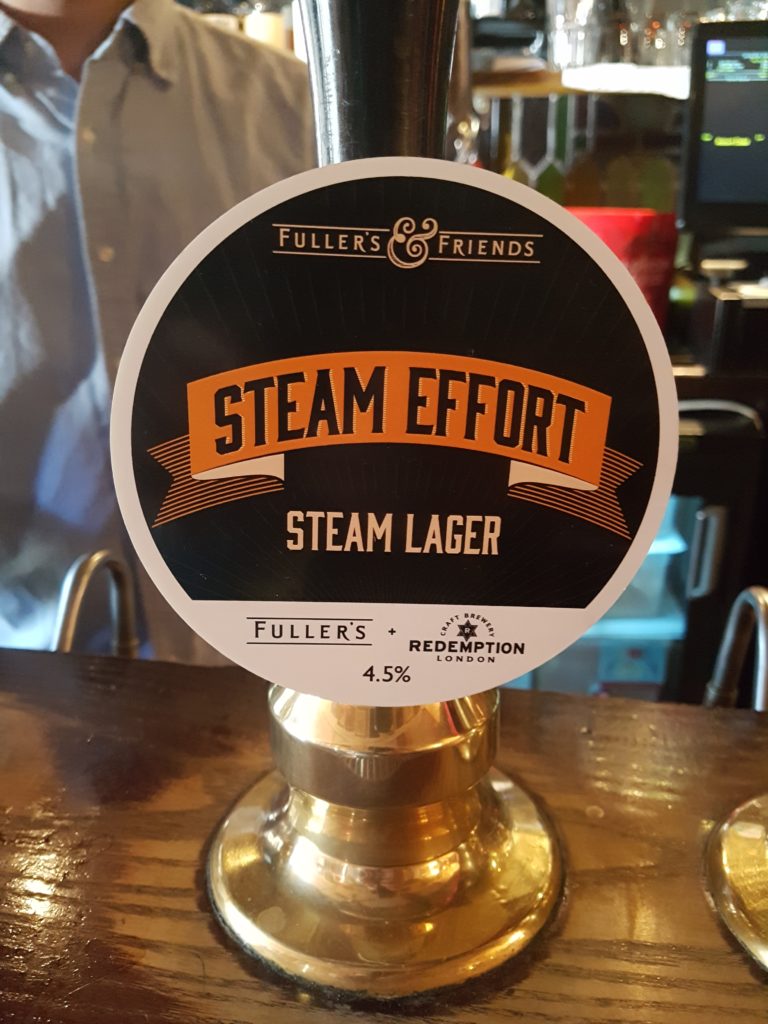
Now, Steam Effort may be brewed with Redemption, but the entirety of the bar is collaboration, really. We don’t have tied houses in Canada in the sense that they do in England, but consider this: Fuller’s owns 400 pubs and they are showcasing other people’s products. Even John Keeling jokingly tells me that they’re a property management company now. The quality may vary from pub to pub, but they are actively doing good for companies that are theoretically competitors. Maybe a cask drinker wouldn’t try Redemption independently. They were founded in 2010 and seem to be part of the Craft Beer wave based on the non-traditional hop varieties in their core lineup. Fuller’s is pushing people to try them. Maybe an older cask drinker might change their mind.
Ah, but it’s a pub crawl. At The Rake, I heard scorn heaped on Humphrey Smith and Samuel Smith’s in general. At one time they were known for being the cheapest pint in London, and I’ve always liked Ye Olde Cheshire Cheese as a building, so I pop my head into the Saloon bar on my way past. I have been looking for an English style IPA and thought I might reacquaint myself with the Samuel Smith version; one of the only ones left.
I am also curious who is left frequenting the pubs. After the Boxing Day flooding in 2016, Samuel Smith’s found itself at odds with its home town of Tadcaster when a historic bridge was wiped out. The brewery rejected the construction of a temporary bridge on their land. They have also banned music. And swearing. I order a half pint and am immediately pigeonholed by a man in his early sixties in a cardigan and tweed jacket who upon finding that I am a Canadian offers the view that everything has gone downhill since they stopped teaching Latin in schools. No half pint is worth that.
Giving Hodge a scratch on the head on the way past, I’m off to Ye Olde Mitre. Before there was Craft Beer in England the beer tourism highlights were the old pubs. Ye Olde Mitre off Hatton Garden is from 1546 and getting at it even with Google Maps requires a lap around the block. Because this is an impromptu crawl, I’ve done no research and I’m amused to find that, yes, it’s a Fuller’s property. A half of Vintage Ale on cask is something I hadn’t been expecting to find and while the experience is a treat, it’s not quite the same as the bottle conditioned version. Stood in the alley at a barrel as the bar is full, I note that they are doing land office business. Later, John Keeling will tell me, “Oh, that’s a good one. It’s part of a separate Bishopric than London.” Technically, that’s a Catholic mitre.
Property in London continues to increase in value and that makes things difficult for breweries just starting out. Owning 400 pubs that continue to increase in value is a sensible business decision, and offering a wide range of products creates some symbiosis in terms of value. There’s something for everyone and it’s largely quality. It’s a brilliant strategy to build not only a business, but interest in the business overall. People feel welcomed and on the entirety of the trip I never see a Fuller’s pub that’s empty.
It’s that concern for the business overall that prompts me to ask him, when he has a moment, this question about cask ale and craft beer culture. I don’t think he sees the divide, which is what I’d expect from a 40 year man. CAMRA votes might be something to be weathered. Maybe it’s one business and always has been. In the meantime, they’ve enacted their own strategy. They’re a property management company now and they offer something for everyone.
He’s just given a talk explaining that in 1998, London was becoming a city of Banks and Shops. That the goal of Fuller’s is to help make London into a world renowned centre of brewing excellence. They’ve a training program through the London Brewers Alliance to offer work experience to brewers in other companies who want to learn specific skills. He notes with some pride that brewing has come back into the centre of London and that they’re helping to export beers overseas. It’s clear that while he’s retiring, he’s not done helping to build yet.
I’ve gotten it wrong. I asked the wrong question, but I got the right answer: Culture comes from the top down. With bad leaders, you get bad results and an intractable self interest that leaves a moribund husk. With the right leaders, you get expansion, camaraderie, growth, and diversity. It’s a question of outlook. We are not done building; we are never done building.
Friday night I bought a bottle of the 2018 Vintage Ale at the LCBO. I was delighted to note that Georgina Young’s signature is on the packaging. I can’t wait to try it.
